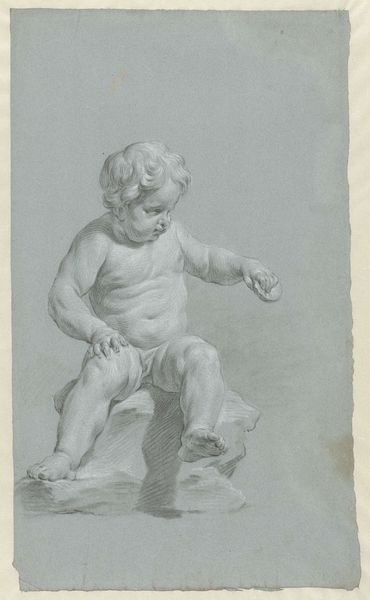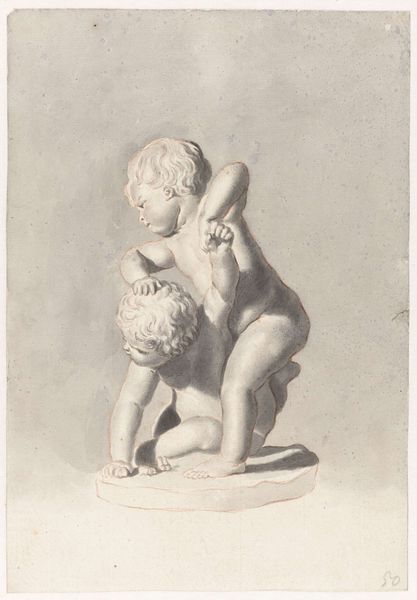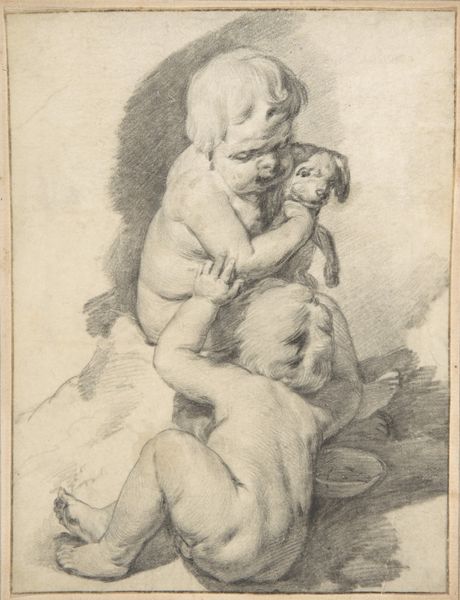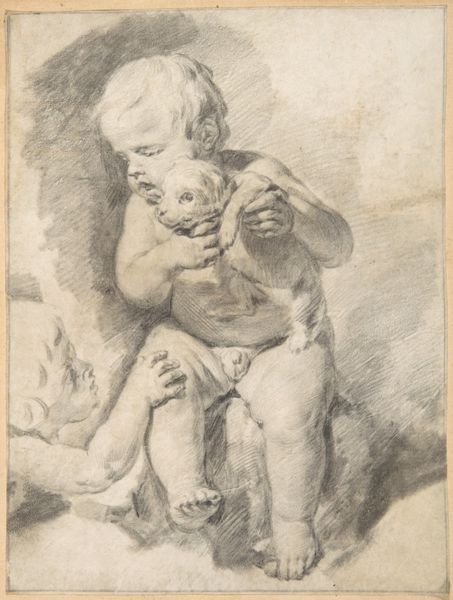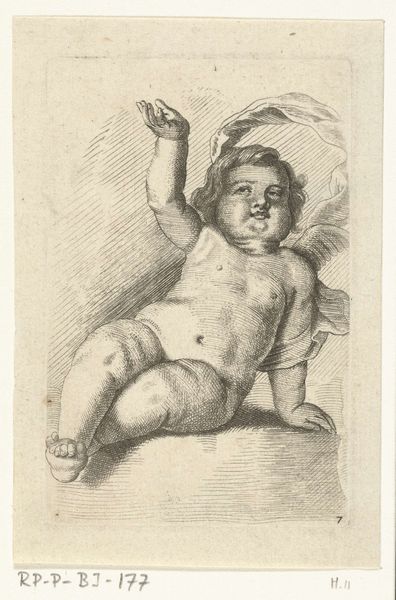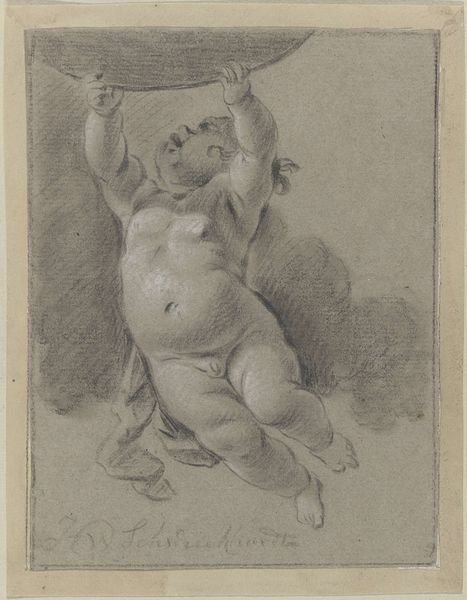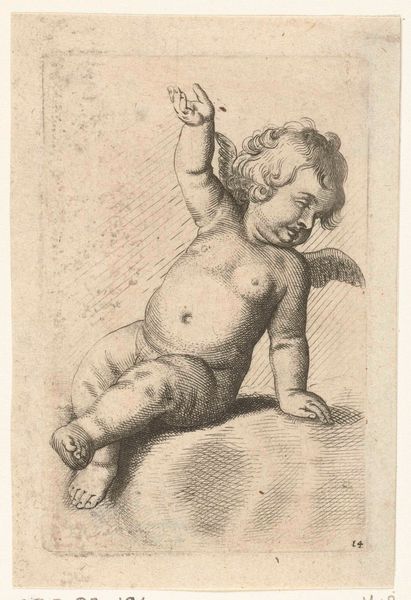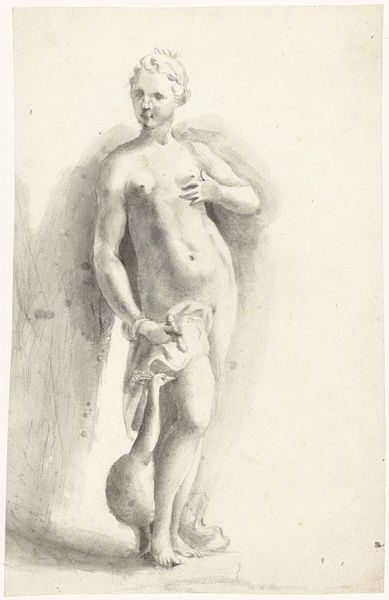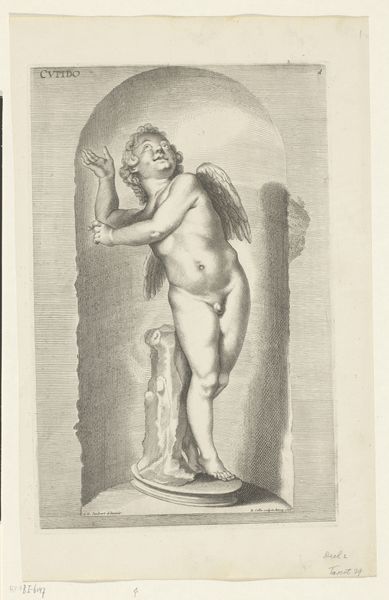
drawing, graphite
#
drawing
#
baroque
#
vanitas
#
graphite
Dimensions: height 274 mm, width 120 mm
Copyright: Rijks Museum: Open Domain
Editor: Here we have Moses ter Borch's "Study of a Naked Boy Sitting Next to a Skull", likely from 1657 or 1658, a graphite drawing. The gray tones create such a somber mood. What draws your attention when you look at this piece? Curator: What I notice is how ter Borch, primarily using graphite, grapples with the complex visual rhetoric of the baroque vanitas tradition, and makes the act of artistic production so obvious. How does the very making of this work point to consumption, mortality, and its implications within the seventeenth-century Dutch society? Editor: That's fascinating. I was mostly looking at the symbolism, the contrast between youth and death. How does the medium connect with societal factors of that era? Curator: The wide availability of graphite allowed artists like ter Borch to quickly produce studies. He challenged traditional high art's association with the expensive oil painting, thus democratizing production. How might the speed and relative affordability of the graphite drawing influenced the conceptualization and dissemination of “vanitas” as a commentary on the transience of life and earthly possessions, particularly for a growing middle class audience? Editor: I never thought about how the choice of graphite relates to challenging expensive high art! Curator: Furthermore, how can we interpret the sketch itself as a commentary on the rapid accumulation and disposal inherent in consumer culture of that era? The choice to draw versus investing significant resources into a painting also provides some interesting food for thought regarding materiality and the concept of making itself as a valuable pursuit during this period. Editor: So, the readily available materials really democratized not only artistic creation, but even these heavy moral messages. It gives the art and the era a whole new meaning for me! Curator: Precisely! Looking at art through its materials, we come to really understand so much more about the world it was made in, don't we?
Comments
No comments
Be the first to comment and join the conversation on the ultimate creative platform.
